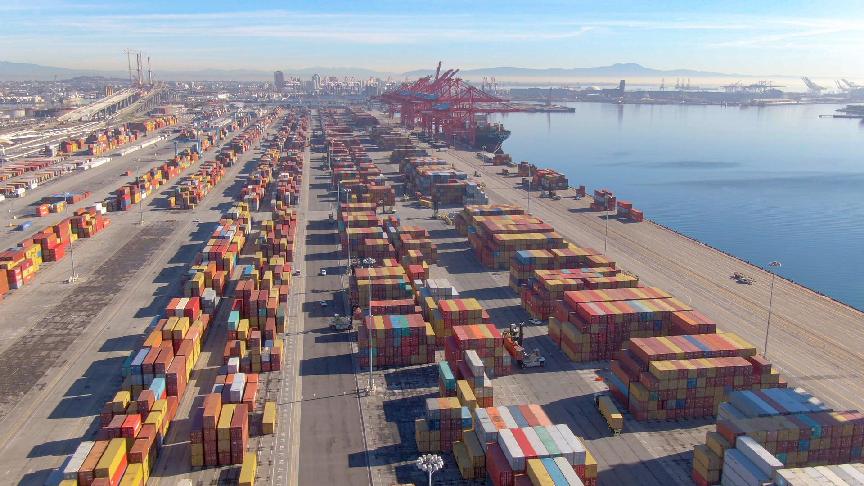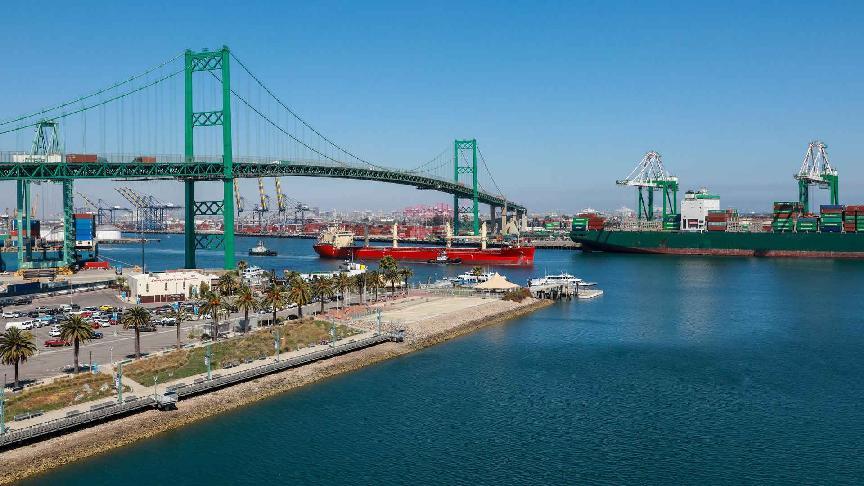18 January 2024 (Lloyd's List) - DESPITE an improved finish to the year, combined volumes at ports of Los Angeles and Long Beach fell to their lowest levels in seven years as the US's largest gateway dealt with a post-pandemic hangover and labour uncertainty.
The ports handled a combined 16.6m teu last year, a 12.6% decline from 2022, representing its second-strongest year. That gap was mostly pronounced in the first half of the year, as a strong first half of 2022 was followed by a weak second, while a weak first half of 2023 was followed by an improved second half.
December volumes were up 14.5% year on year and 3.2% over the same period in ‘pre-pandemic' 2019. Overall, last year's volumes were 1.9% below 2019 levels, although the year's second half saw them rise 3.5% above the same period in 2019, owing mostly to stronger figures from Long Beach.
Imports were virtually the same as in the second half of 2019, and down 2.6% for the full year, but were consistently above 2019 levels starting in September, shortly after the ILWU-PMA labour contract was ratified upon a tentative June agreement.
Nationwide, port volumes last year suffered from the end of the pandemic-era's shipping bonanza as inventory build-up and economic uncertainty put a break on imports.
On the west coast, port congestion and a labour dispute turbocharged a shift of cargo to the east and US Gulf coasts that began in 2021 through most of last year, although port chiefs of both Los Angeles and Long Beach said the ratification of the labour contract in August helped steady volumes in the fourth quarter.
As expected, the port of Los Angeles said the immediate focus is on recapturing market share.
"In 2024, our sights are set on community investment, sustainability progress and capturing additional market share," executive director Gene Seroka said.
"To drive cargo, we're investing in a 10-year, $2bn capital improvement programme. We'll also focus on secure technology enhancements to improve efficiency and reduce our carbon footprint. All that leads to additional jobs and the port's ability to reinvest more dollars back into our communities."
Climate change and geopolitical turmoil may well help the San Pedro Bay ports further turn the tide.
The severe drought impacting Panama Canal transits, and the Houthi threat driving carriers away from the Red Sea - both key routes for shipments from Asia to east and US Gulf coast ports - mean the uncertainty that engulfed the west coast through much of last year has now switched to the east and Gulf coast.
Moreover, the labour disruption cloud has also migrated eastward, as contracts for east and Gulf coast dockworkers, represented by the International Longshoremen's Association, and their employers, the United States Maritime Alliance, expire in September.
While import figures from logistics and software provider Descartes showed east and Gulf coast ports gained volumes December, carriers began increasingly diverting cargo around the Cape of Good Hope about halfway through the month. This will likely lead to delays for US east coast cargoes at least in the near term.







